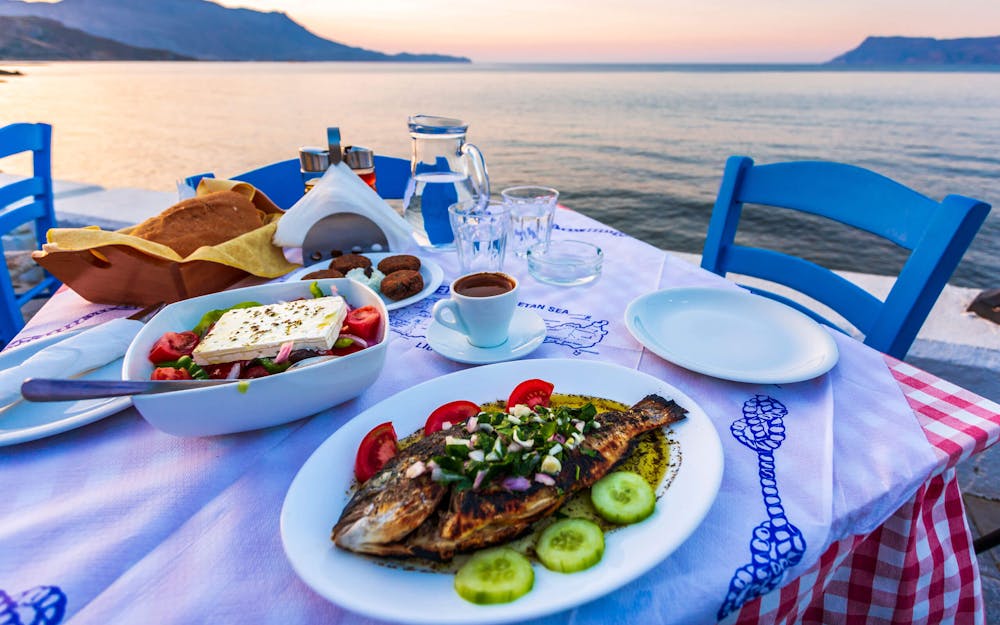Greek Fish Guide - Defining Greek Fish Types

Any discussion of Greek or Mediterranean cuisine in general simply cannot be complete without celebrating the bounty of the oceans. Greece enjoys an incredible maritime culture, with three seas bordering its coastline - the Aegean, Ionian, and Mediterranean seas deeply influencing the culture and palate of the land and its incredible peoples.
A healthy interest in seafood is considered essential for truly understanding Greek culture, with so many species of fish and associated dishes to count. Yet you don’t have to eat fish to have an appreciation for them, nor to learn more about the ichthyofauna heralding from such a storied part of the world. This article will boost your confidence when you're ordering a fish dish at your favorite Greek restaurant, especially Naxos Taverna!
This article takes you on a journey through the unique qualities of popular Greek fish varieties, highlighting what makes each of them special. Don't forget, if you're planning to treat yourself to these aquatic wonders, it's awesome to back sustainable fishing practices and get a glimpse of their intriguing histories. By doing so, you're not just savoring great flavors, but also ensuring that these fantastic fish will continue to grace our tables for years to come!
Fagri (Pagrus auriga) - The Pride Of Greece
It’s hard to talk of Greek gastronomy without mentioning Fagri, one of its most prized fishes. Thanks to its continual swimming in beautiful clear water, Fagri is a favorite for clean grilling and delicious baking. There’s a reason it's named after the word “Phagros,” whose etymology means “beautiful.” Fagri offers a subtle but unique flavor and flaky flesh that works well with a variety of other ingredients and sauces, making it a perfect indulgence but also a fantastic snack fish. As such, it’s mostly associated with the European Sea Bream due to its similar taste. Serve with citrus, fresh herbs, and a dash of olive oil to enjoy its best and most natural taste.
Skorpina (Scorpaena scrofa) - Unmistakable Beauty
Skorpina is perhaps one of the most distinctive fish types occupying this list. With its incredible light red appearance and notable spines, it’s hard not to fall in love with the aesthetic of this wonderful fish.
Red often means “danger” in animal life, but you’ll find that there’s nothing more delicious and inviting than pan-fried Skorpina, as its white and delicate flesh is delicious, almost to a fault. Thanks to its sweet undertones in flavor, texture, and cooking versatility, Skorpina is often related to snapper fish. They can even be substituted quite readily from dish to dish without altering the delectable flavors offered by each.

Lavraki (Dicentrarchus labrax) - A Staple Classic
Lavraki is the Greek word for Sea Bass, which isn’t just a comparison, but a name for the same fish you may have enjoyed elsewhere. Still, it offers a staple presence in the world of Greek cooking, especially among seafood enthusiasts, thanks to its delicious taste and reliability.
The fantastic virtue of Lavraki is that it not only tastes wonderful but works in so many excellent dishes. It offers a firm texture and mild flavor that helps take on and emphasize the taste profile of any marinades or accompaniments it may be coupled with - as such, Lavraki is a chef’s delight. If you’re just getting started with learning Greek cuisine, make sure preparing and cultivating Lavraki is an essential part of your process.
An interesting fact is that while Lavraki is one of the most heavily farmed fish types in Greek waters, it still fetches a high price thanks to how in-demand it has been and will remain.
St Pierre (Zeus faber): Non-Native, But Celebrated
You may know St Pierre by its alternate name - John Dory, which is more popular in other European countries. It presents a unique aesthetic: a flat body, dark markings, and, let’s face it, the kind of face only a mother (or seafood fanatic) could love.
Thankfully, that aesthetic doesn’t reflect in its flavor, which is wholesome, delicate, slightly sweet, and utterly more-ish. It’s not native to Grecian waters, but it is certainly a staple of Mediterranean cooking. In taste, some suggest it has similarities to Dover Sole and works best when grilled or roasted. Moreover, St Pierre is often considered to be a sea-foodies fish, as the complex notes and richness tend to work spectacularly with simple additions, as opposed to an elemental contribution to a more complex recipe.
Visit Naxos Taverna Today!
Emanating the true spirit of Greek taverns, Naxos Taverna in Las Vegas holds a sacred commitment to honoring every fish and seafood dish that graces our menu.
Embark on a culinary odyssey across the Mediterranean Sea right here! Your taste buds are in for an adventure like no other. Join us and dive into the vibrant world of these remarkable fish species – a voyage of flavors waiting to be savored. Your table at Naxos Taverna awaits your arrival for an unforgettable seafood escapade!
